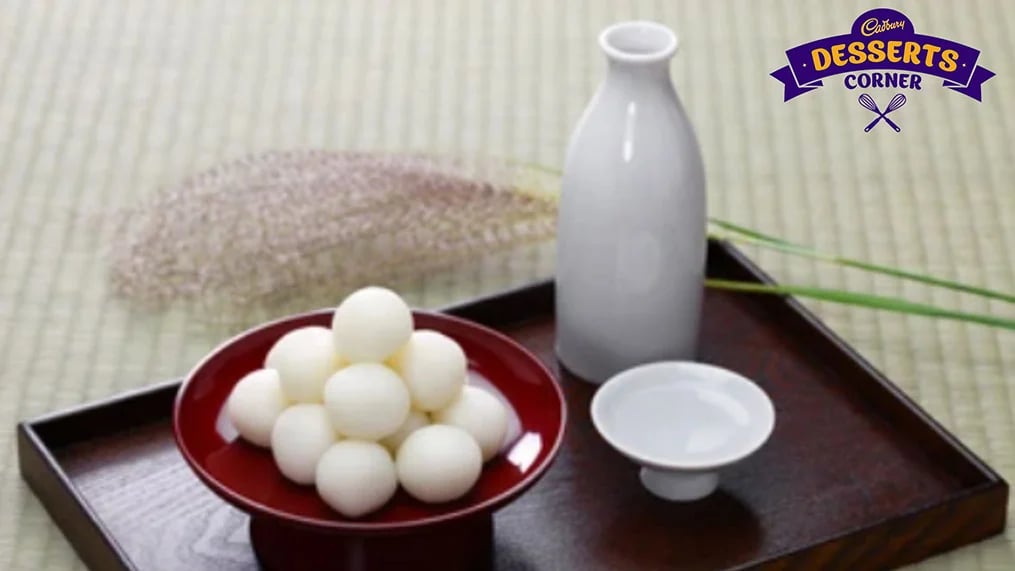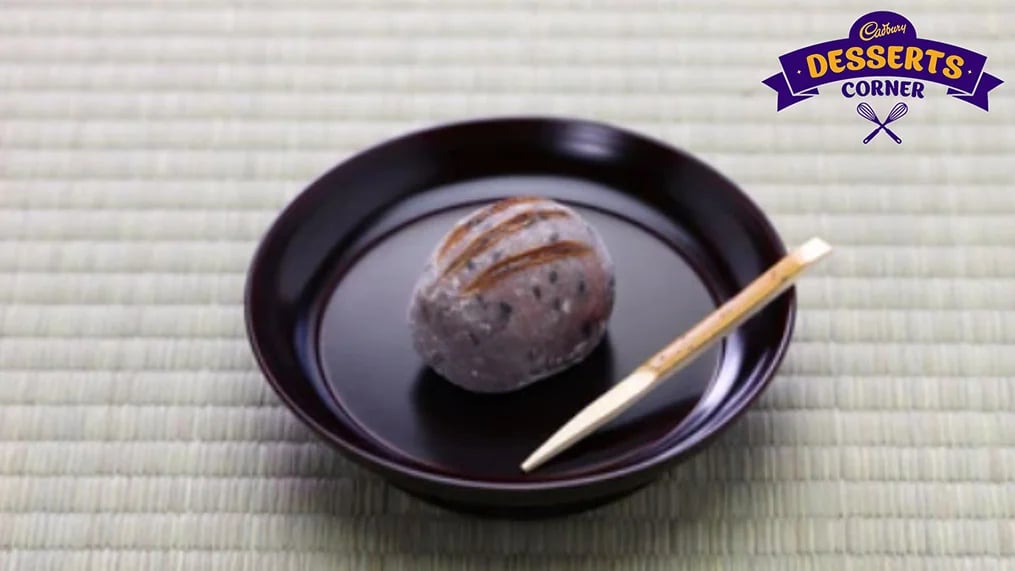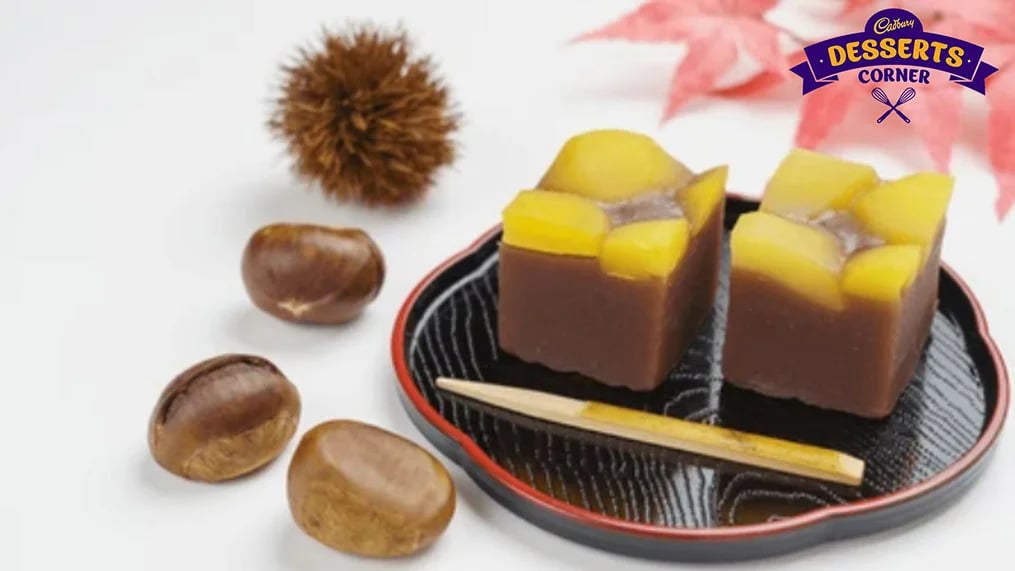- Home
- Articles
- Bask In The Autumnal Glow of Japan’s Convections As They Take Orange Hues And Turn Mellow
Autumn is a time of eating one’s heart out in Japan for after a spell of severe weather, autumn brings relief with it, and people’s appetite also returns and so it is aptly called the season of appetite where sweet confections take on the colors and flavors of autumn.

Autumn is a time of eating one’s heart out in Japan for after a spell of severe weather, autumn brings relief with it, and people’s appetite also returns and so it is aptly called the season of appetite where sweet confections take on the colors and flavors of autumn.
There is no other place like Kyoto to watch the leaves change color and turn the beautiful reddish shade reminiscent of autumn. The Japanese adapt to the changes in seasons and fashion their local ingredients into whatever grows abundant in any particular season. Autumn sees a bounty of persimmons, grapes, sweet potatoes, and chestnuts in Japan and on the ground, mushrooms grow in abundance.
Autumn comes as a relief, after a spell of calamitous weather that is dominated by humid summer months, damaging typhoons, and heavy downpours, with its rich golden and orange foliage and the wispy wings of dragonflies. Autumn typically begins around mid-November in Japan and lasts till early December. Like sweets in most Asian countries, the autumn wagashi are also tied to certain traditional holidays and festivities, some rooted in ancient lore and the moon.
What Makes Up the Autumn Wagashi?
Falling leaves of the maple trees, ginkgo, persimmon, dark grapes hanging from vines, and mushrooms flourishing on forest floor rots are the motifs for any dessert made during the autumn season. Hues of red, orange, and yellows dominate the color palette of the Japanese sweets and one thing remains unchanging, most of the wagashi is enjoyed alongside a steaming cup of hot green tea, no matter the weather.
The Ingredients Used For Autumn Wagashi
The staple ingredients remain unchanging like the red bean paste used for filling and the soft chewy pounded rice cake exterior. White beans also feature during autumn, which mostly is used to create the shells of the sweets. Another ingredient though not too common and a reminder of summer is agar or the gelatinous red algae used to make transparant desserts.
The Autumn Wagashi
A faint chill creeps in during the golden autumnal season in Japan for which the Japanese have an apt term called “Shokuyoku no Aki”, meaning that Autumn is the season of appetite. So, dig your heels in and take notes for the next time you’re in Japan during the autumn season.
1.Tsukimi dango

Celebrated during the September full moon, the Tsukimi festival honors the autumn harvest moon through moon viewing and eating Tsukimi dango. Traditionally made from shiratamako flour rolled into small balls and boiled, contemporary recipes may incorporate kabocha pumpkin or Japanese sweet potato. Representing rabbits associated with the moon in Japan, the dango can take on cute bunny-like shapes.
2.Inoko mochi

Inoko Mochi are sweet rice cakes shaped like cute wild boars with a filling that varies depending on the region. Commonly, a sweet red bean paste is wrapped in soft mochi dough and molded into an oblong shape resembling a boar. Originating from ancient China, the Heian imperial court (794-1185 CE) adopted the custom, of gifting Inoko Mochi to retainers annually on the evening of Inoko - the 10th day of the 10th lunar month. This corresponds with the zodiac hour of the boar (around 10 PM). Symbolizing prosperity, the boar rice cakes were eaten to pray for abundant descendants and ward off evil spirits.
3.Yokan Jelly

One classic confection of autumn is yokan, a sweet red bean paste dessert and two distinctive types of yokan come into their own - Mushi-yokan and Imo-yokan. Mushi-yokan is a steamed variation of traditional yokan that results in a dense, moist texture and often contains dried fruits like persimmons. Imo-yokan on the other hand features sweet potatoes or satsumaimo. The sweet potatoes are steamed, mashed with sugar and salt, then formed into blocks resembling yokan.
4.Nerikiri
Nerikiri wagashi are known for their artistic craftsmanship and intricate designs that change with the change in season. In autumn, the designs often reflect the natural transformations happening at this time. Some common sources of inspiration drawn from fall include – Japanese maple tree leaves, ginkgo leaves, pear-shaped fruit of nashi trees, persimmons, chestnuts in their prickly casings, grape clusters, crisp apples, and mushrooms.
5.Kuri no Shibukawani
This sweet treat is Japan's version of marron glacé - candied chestnuts where only the thin inner skin remains after peeling. To make Shibukawani, chestnuts are first peeled off their outer shells. They are then boiled in a baking soda solution multiple times to remove tannins while keeping the inner skin intact. The chestnuts are slowly stewed in a light syrup over low heat. This candies them while preserving their shape. It results in a glossy, soft yet chewy texture.
More Like This
Popular Articles




Trending Web Stories
Curated Recipes

















